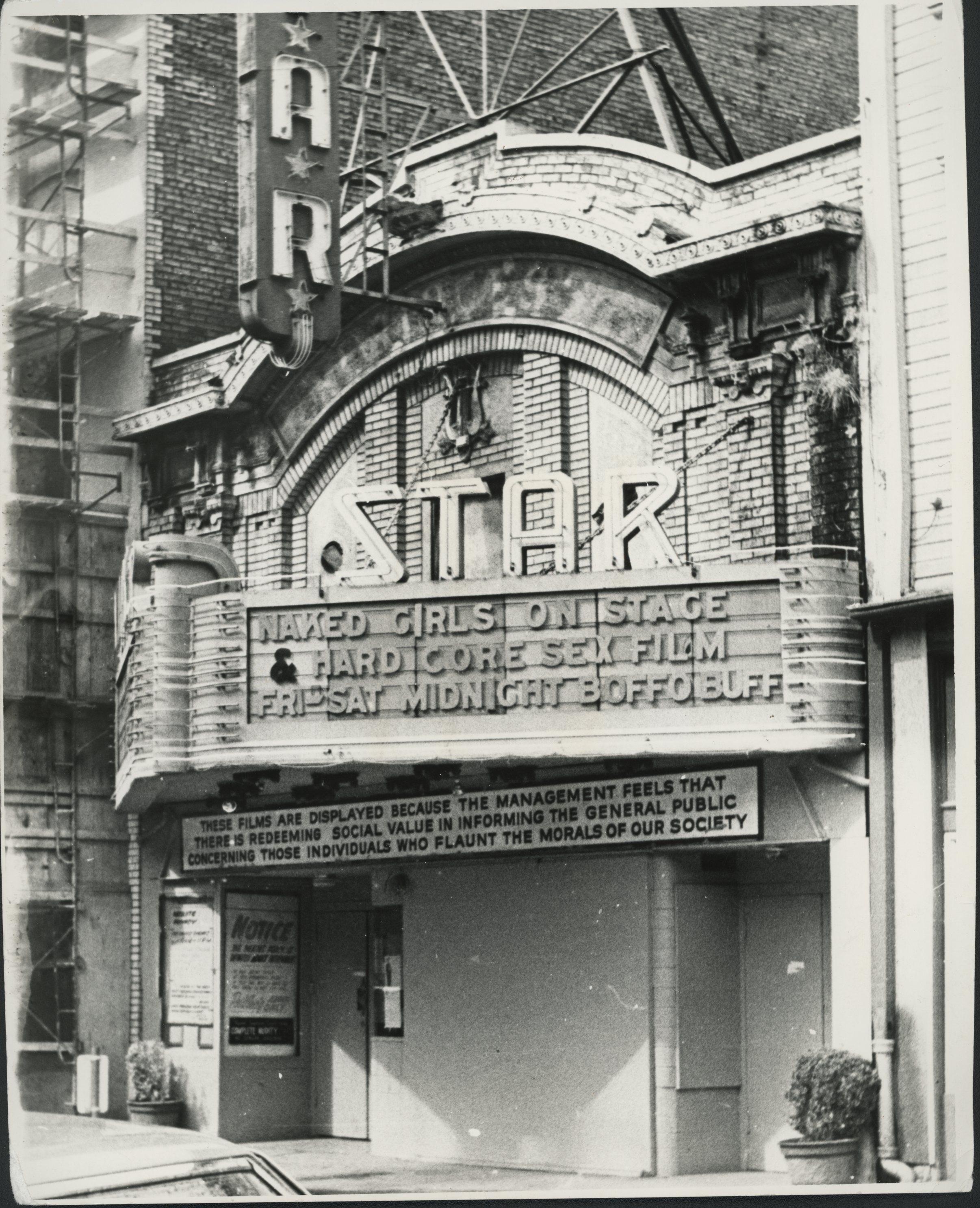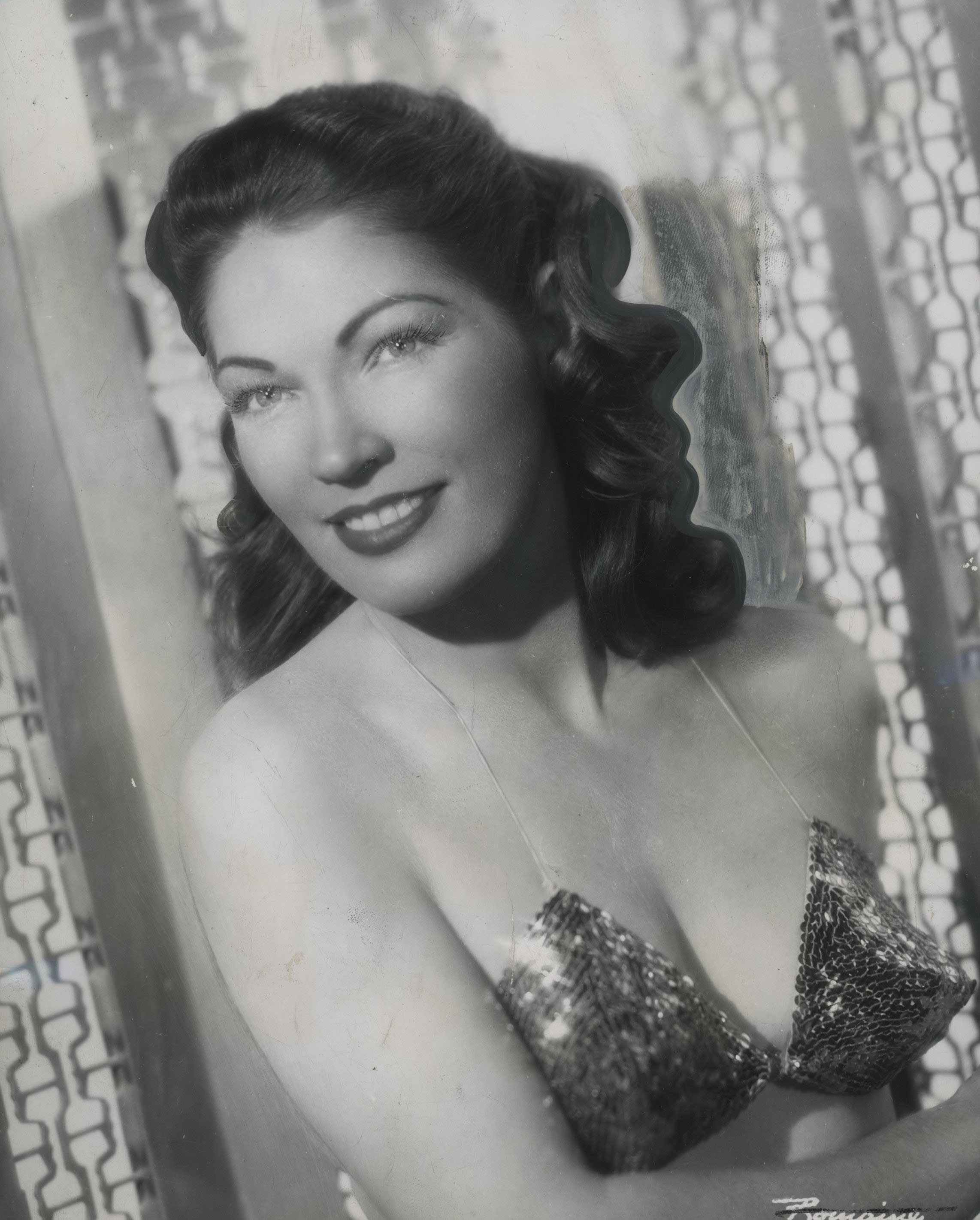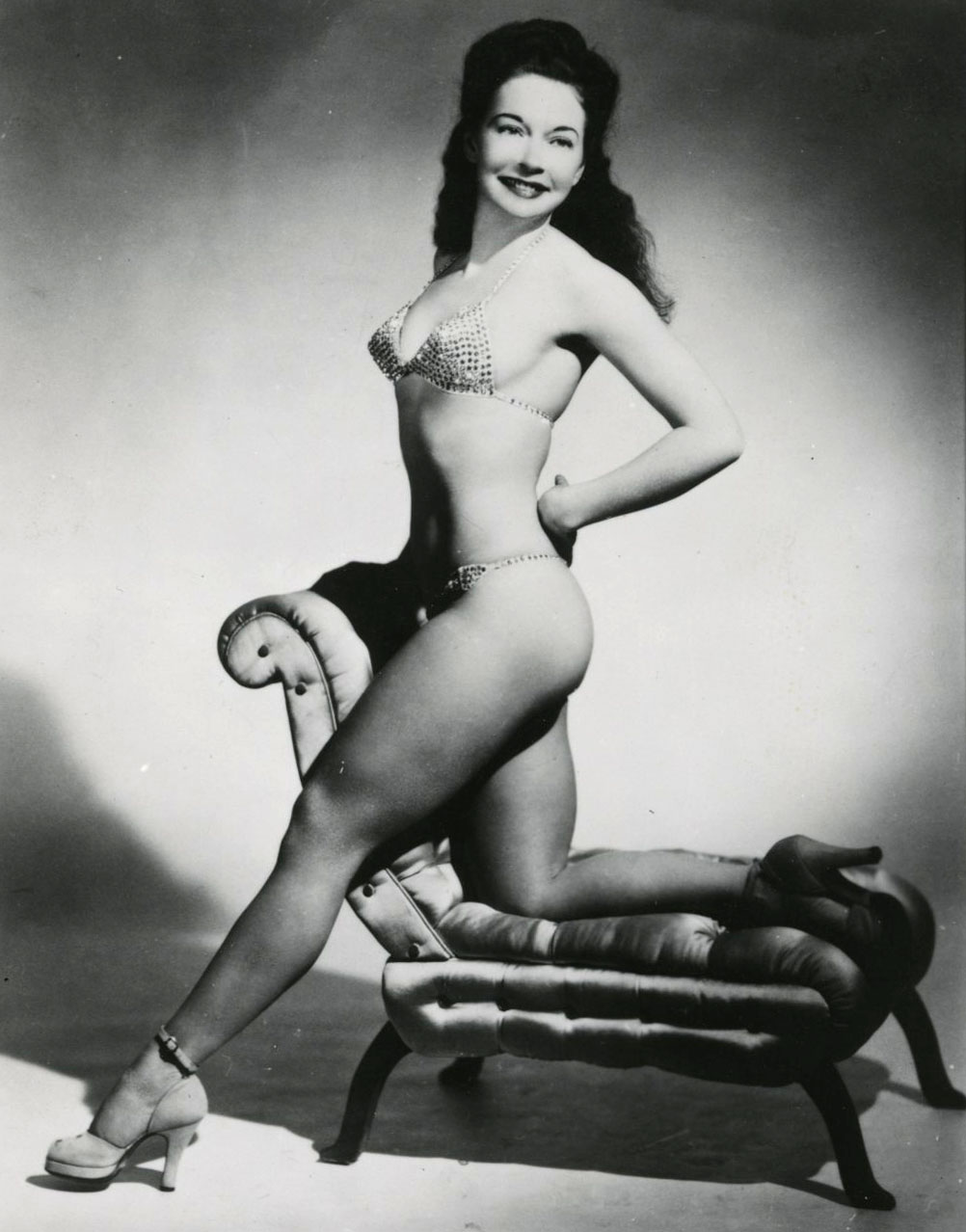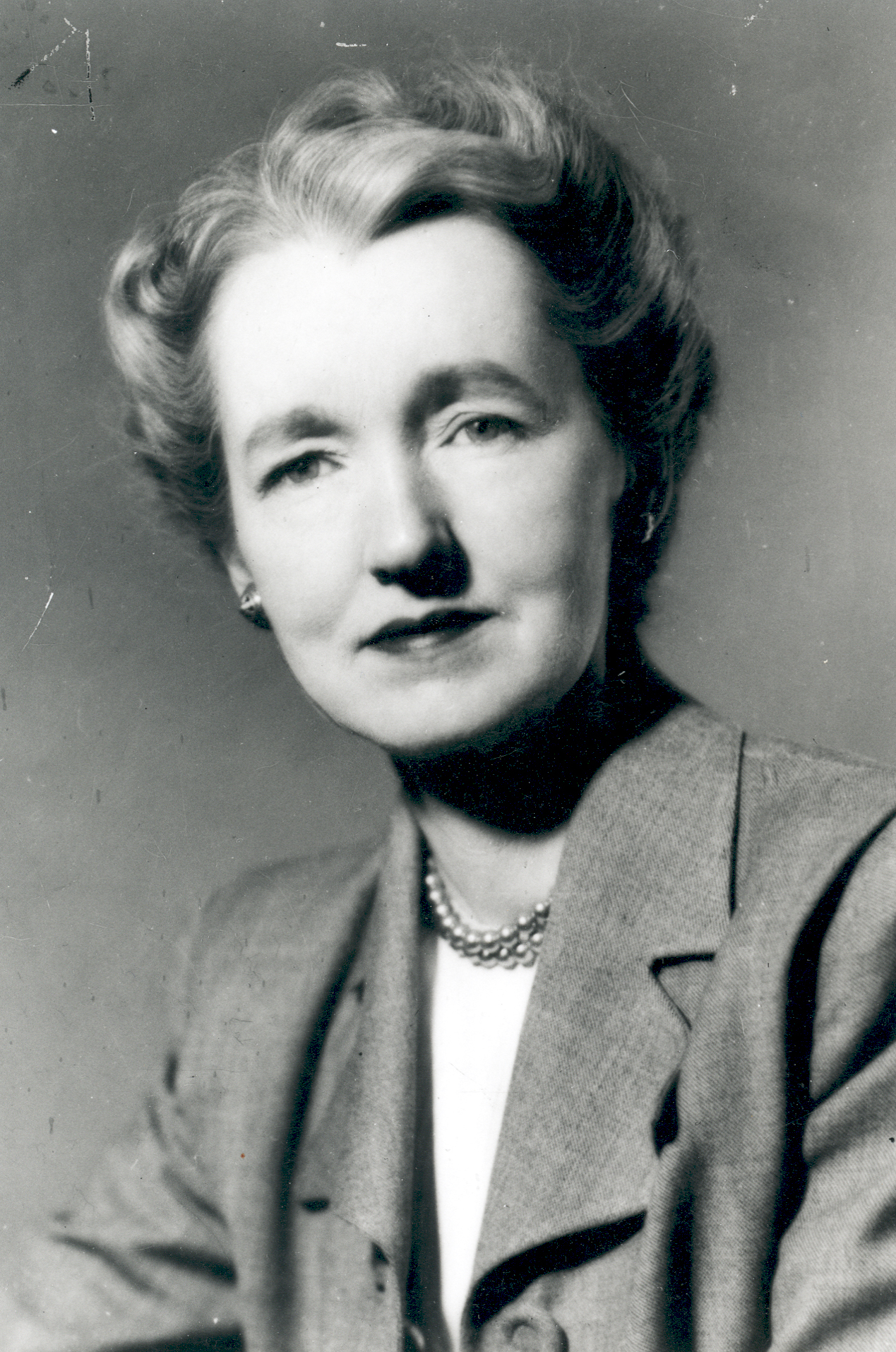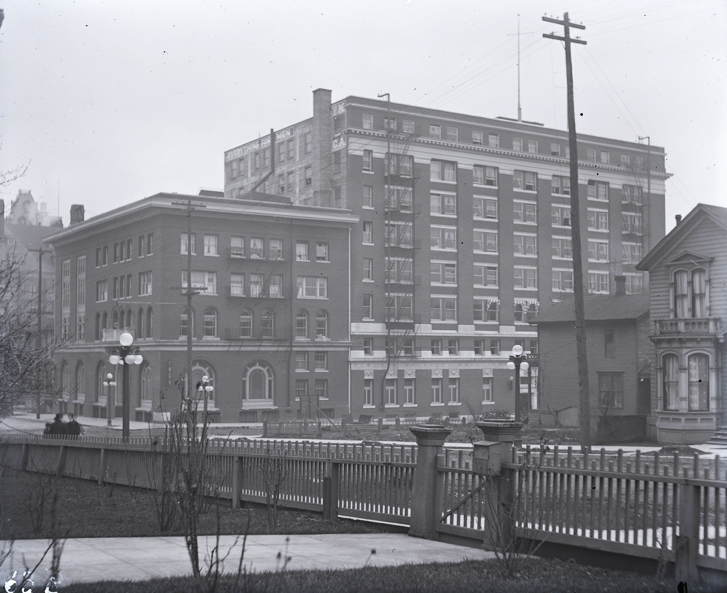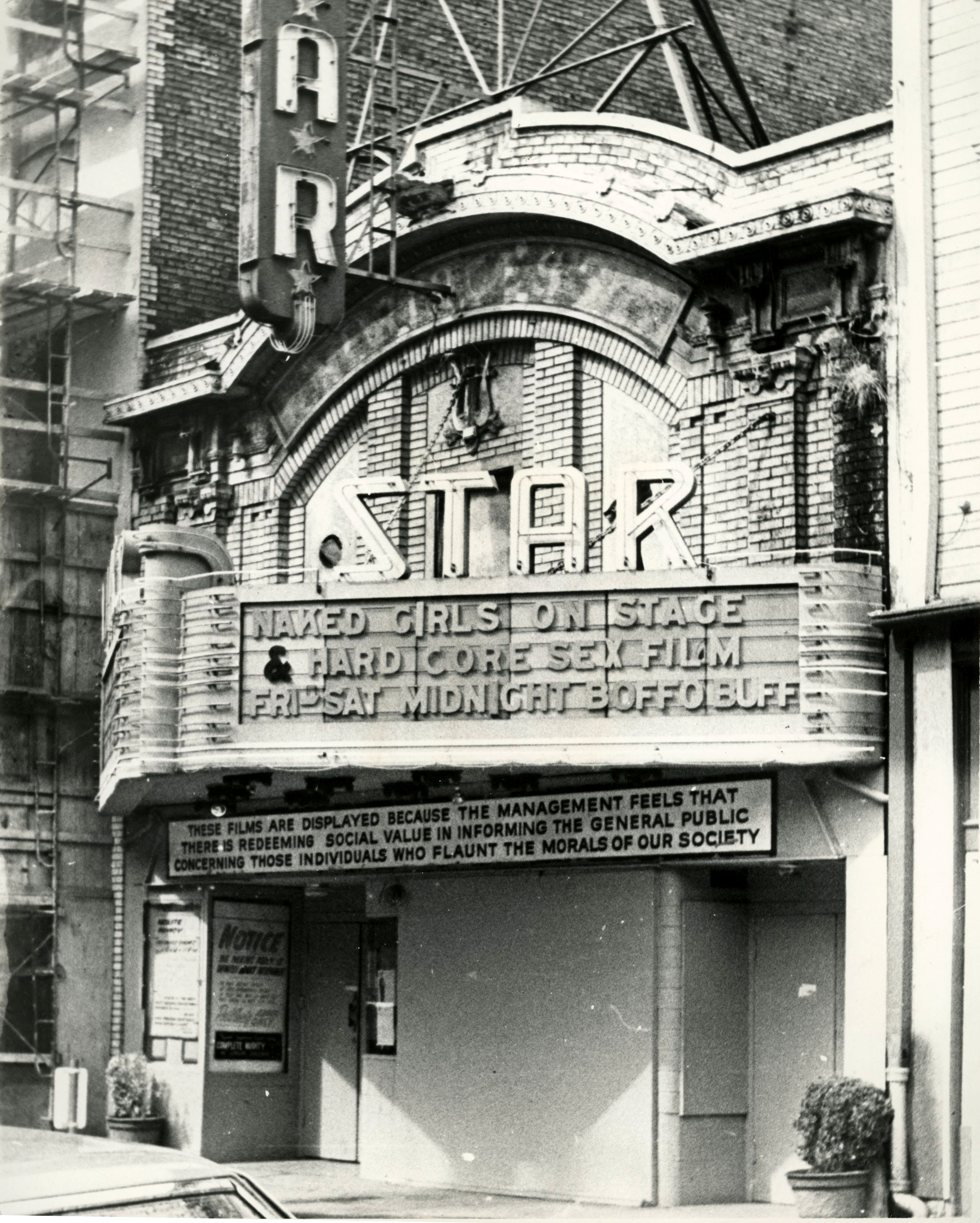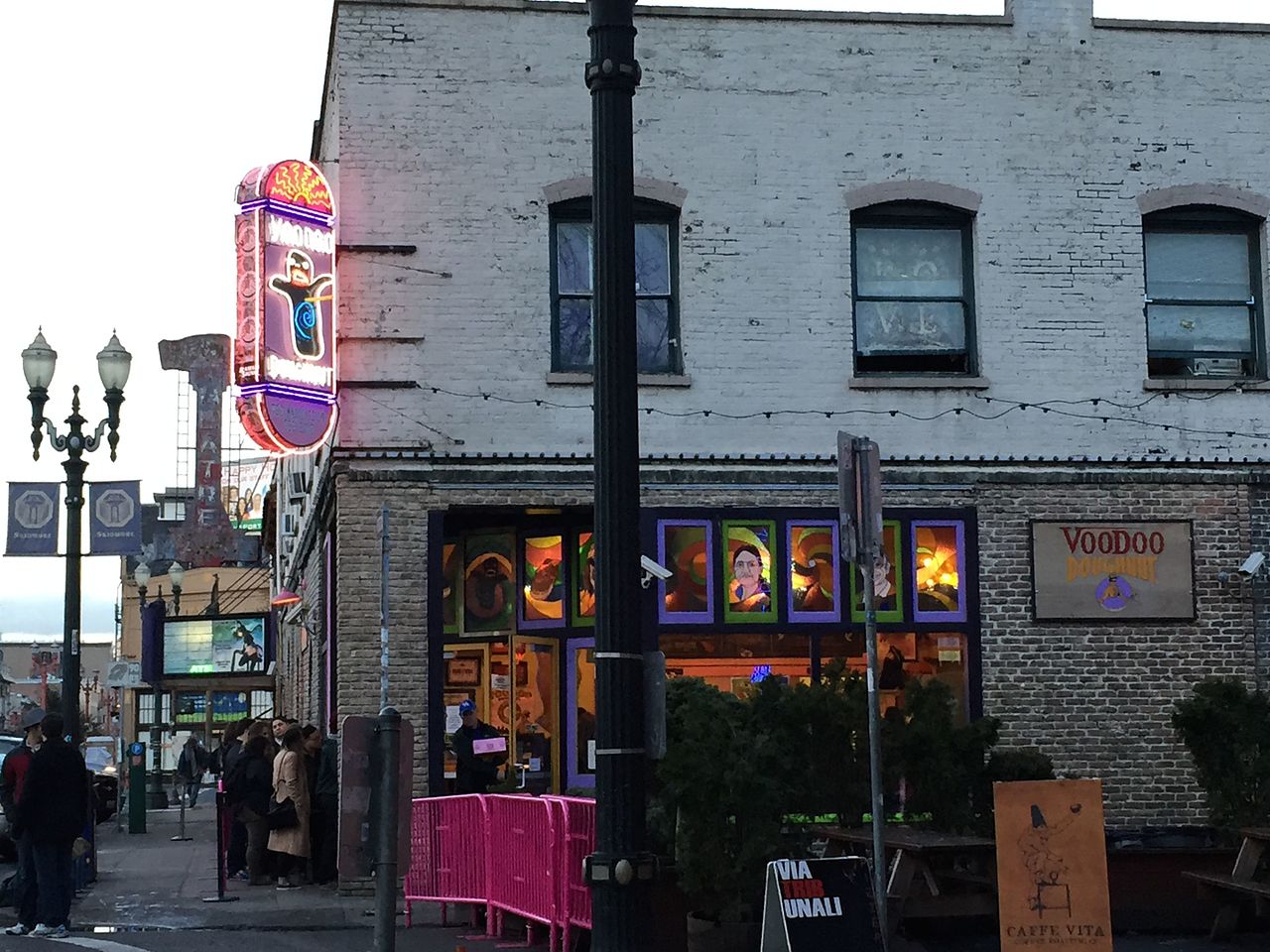Portland has more strip clubs per capita than any other city in the United States. With one strip club for every 11,826 residents, Portland far outranks Miami, New Orleans, and Las Vegas—larger cities with long-held reputations as meccas for adult entertainment. The boom in strip clubs can be traced to State vs. Henry, a landmark Oregon Supreme Court decision in 1987 that protected all-nude stripping under the First Amendment.
From its beginnings as a wide-open port town, Portland developed a strong culture of vice that proved resilient to attempts to eradicate it. Brothels, saloons, gambling halls, and burlesque and vaudeville theaters became essential parts of a growing city largely populated by unattached males and seasonal workers. Drinking, gambling, and so-called illicit sex often could be obtained in a single location, allowing men to indulge a variety of vices in one building. Thriving red-light districts sprouted up along the waterfront and on central downtown’s skid row around Burnside Street, as well in the city’s Chinatown, where Chinese-owned businesses and Chinese sex workers became easy targets for police chiefs or mayors looking to prove their moral stringency without alienating Portland’s white citizens.
Red-light districts have been a presence in major cities in the United States since at least the 1860s, and districts such as Storyville in New Orleans became famous. Though less notorious on a national scale, Portland’s adult entertainment offerings gained a local reputation for being immune from attempts by police or government officials to clean them up or close them down.
Throughout the late nineteenth and early twentieth century, a rough-and-ready frontier ethos in Portland battled against Victorian cultural values—and often won. Occasionally, the city experimented with anti-gambling, anti-opium, and anti-prostitution ordinances and imposed heavy taxes and prohibitive licensing fees on barrooms and saloons. Portlanders, however, cared more about government corruption and inefficiency than the presence of vice, which many of them indulged in. Most attempts to curb vice and stop the commercial sex trade had little practical effect.
Reports or reform efforts during the first half of the twentieth century sometimes brought the issue of vice to the city's attention, but by the end of the 1950s the anti-vice crusade was being largely overshadowed by a rapidly changing culture. The sexual revolution of the late 1960s and early 1970s removed many taboos surrounding sex and nudity, sparking a nationwide reckoning with the concept of “obscenity.” Go-go dancing and topless dance bars spread across the country, marking the demise of the theatrical burlesque show and ushering in topless and fully nude dancing.
Changing sexual norms used nudity not only as a source of sexual titillation but also as a political tool and form of artistic expression. Pornography became a thriving industry, and new ratings, X and XXX, were created. Hollywood production codes loosened, and graphic sex increasingly became a part of many feature films. In 1974, Larry Flint created Hustler, which confirmed that nude and hard-core pornography magazines had become an economically sound industry.
Strip clubs were forced to compete with a society where sex was free, nudity was not taboo, and explicit pornography was available to anyone who had the money to buy a movie ticket or a magazine. Many Portland businesses adapted to the changes and considered fully nude dancing as a viable business model. In 1964, Roy H. Keller converted his piano bar on Southwest Broadway into the first topless bar in Portland. The success of Mary’s Club marked the beginning of a new era of topless dancing in Portland, and soon other topless bars opened in the city, including the Chelsea, the Tom Kat, and the Star Theater.
Throughout the 1970s, the Star Theater showed erotic films, hosted nude dancing revues, and brought strippers on stage for what it called “live sex shows.” In 1976, after learning about the club’s offerings and obtaining a copy of Pumpin’ the Poop Shoot, a film the Star had shown, the city sued the club’s owner, John Tidyman, for violating an obscenity statute. The Oregon Supreme Court, in City of Portland vs. Tidyman, ruled that the theater’s activities were protected under Article 1, Section 8 of the Oregon Constitution: “No law shall be passed restraining the free expression of opinion, or restricting the right to speak, write, or print freely on any subject whatever.”
In late 1982, Deschutes County District Judge Joseph J. Thalhofer issued a search warrant for an adult bookstore in Redmond owned by Earl Henry. Henry was charged with disseminating obscene material and violating “contemporary state standards” by appealing to a “prurient interest in sex” and selling merchandise that “taken as a whole…lacks serious literary, artistic, political or scientific value.” He was fined $2,000 dollars and sentenced to sixty days in jail.
The ACLU filed an appeal to the Oregon Supreme Court. Rex Armstrong, president of the ACLU, argued that Henry’s business was protected by Article 1, Section 8 of the Oregon Constitution. In January 1987, in a 7-0 ruling, the court held that state law could not criminalize obscenity or dictate what constitutes socially acceptable forms of expression based on a “community sexual standard.” Under Justice Robert E. Jones, the court’s decision made it clear that “any person can write, print, read, say, show or sell anything to a consenting adult even though that expression may be generally or universally considered obscene.”
Oregon constitutional jurisprudence requires the Oregon Supreme Court to interpret state law under the Oregon Constitution rather than referring to federal law. Because the statute that the Henry decision overturned was based on federal law, it did not hold up under the broader provisions of the Oregon Constitution. By validating “showing” as a constitutionally protected form of free speech, Henry allowed nude dancing in Portland to proliferate without threat of censorship or undue regulation.
Some fully nude dancing was performed in Oregon before the ruling, but after 1989, it became the norm in clubs across Portland. Within a year of the Henry ruling, fifty strip clubs were operating in Portland. A Seattle travel agency began chartering buses to Portland, and publications such as Exotic Magazine and T&A Times published guide maps and calendars that could be purchased in coin boxes on the street. After the AIDS crisis of the 1980s, many Gen-Xers considered nude strip clubs a comparably “safe” form of adult sexual entertainment. Half of the strip clubs in the post-Henry boom were located on the economically depressed southeast side of the city, with 25 percent in northeast Portland, 10 percent on the west side, and a smaller portion in the outer suburbs.
Because nude dancing was protected as a form of free speech in Oregon, opponents to strip clubs had to find creative ways to remove them from their neighborhoods. Neighborhood organizations petitioned to repeal the Henry ruling and urged the legislature to pass laws that would curtail the growth of nude strip clubs near residential areas. They complained that nude-dancing establishments would increase traffic and parking problems, create litter and noise, and attract criminal activity such as drug trafficking, prostitution, and street brawls. Groups picketed, petitioned, wrote letters to city officials, and attempted to partner with the Oregon Liquor Control Commission to deny adult businesses their liquor licenses. None of the attempts succeeded. Other groups turned to zoning laws, but those attempts also failed because adult businesses in Oregon cannot be zoned differently than other businesses.
In 1989, the legislature considered Joint House Resolution 20, a proposed constitutional amendment aimed at overturning Henry and allowing state or local governments to regulate and prohibit all-nude dancing. The proposal died in the Senate by an 18-11 vote. Portland Mayor Bud Clark caused a stir when he voiced support for Henry, stating that he was more concerned with violence on the streets and on film than the issue of nudity in strip clubs.
While neighborhood groups and other civic organizations have continued to protest the strip clubs in their neighborhoods, clubs have become an intrinsic part of Portland’s entertainment and tourist industry. In 2005, in the City of Nyssa vs. Miss Sally's Gentlemen's Club, the Oregon Supreme Court decided 5-0 to uphold the state’s unique freedom of speech laws, further shielding such businesses from more rules and regulation. A point of pride for many residents and an attraction for tourists, Portland’s strip-club scene shows no signs of slowing down.
Along with annual guides to the city’s best bars, restaurants, and volunteer organizations, Willamette Week publishes an annual strip-club guide. The December 2017 guide included the “Ten Clubmandments” for strip club etiquette as well as a list of beauty tips from the scene’s most popular dancers. Tourist guides such as Frommer’s and Lonely Planet have sections dedicated to strip clubs in the city. The comedy show Portlandia featured Mary’s Strip Club in its opening title sequence alongside the iconic images of the statue of Portlandia and the Hawthorne Bridge. A Time magazine travel article on Portland listed strip clubs as one of the top ten things to visit in the city alongside other attractions such as Powell’s Books, Voodoo Doughnuts, food carts, microbreweries, and Forest Park.
The Time article exemplifies the way strip clubs have become intertwined with widely recognized symbols of the city, removing them from the margins of culture to places of prominence and historical significance. Locals and tourists alike visit Portland’s famous strip clubs without realizing the momentous role they played in establishing Oregon’s freedom of speech laws and building Portland’s worldwide reputation as a liberal, open-minded, and defiantly “weird” city.
-
![Two women were arrested for dancing nude at the Star; charges dismissed]()
Star Theater, Portland, June 1972.
Two women were arrested for dancing nude at the Star; charges dismissed Courtesy Oregon Hist. Soc. Research Library, Orhi103391, photo file 1860
-
![]()
Candy Renee, the "Belle of New Orleans" at the Star Theater, NW 6th, Portland, 1953.
Courtesy Oregon Hist. Soc. Research Lib., 104179, photo file 898
-
![]()
Laverne, "the girl with the million dollar legs," was a headliner at the Star Theater, 1954.
Courtesy Oregon Hist. Soc. Research Lib., Coll. Journal, 012382
Related Entries
-
![Dorothy McCullough Lee (1902-1981)]()
Dorothy McCullough Lee (1902-1981)
In 1947, the city of Portland crawled with gambling halls, strip joints…
-
![Portland Vice Scandal (1912-1913)]()
Portland Vice Scandal (1912-1913)
On November 8, 1912, Portland police arrested nineteen-year-old Benjami…
-
![Star Theater]()
Star Theater
Since the Star Theater opened in Portland in May 1911, it has operated …
-
![Voodoo Doughnut]()
Voodoo Doughnut
Voodoo Doughnut is an independently owned business in Portland and Euge…
-
X-Ray Cafe
The X-Ray Cafe was a premiere hole-in-the-wall, all-ages music venue th…
Map This on the Oregon History WayFinder
The Oregon History Wayfinder is an interactive map that identifies significant places, people, and events in Oregon history.
Further Reading
Abbott, Carl. Portland in Three Centuries: The Place and the People. Corvallis: Oregon State University Press, 2011.
"District Judge Thalhoefer Dead at 88." The Bend Bulletin, January 8, 2013.
Lansing, Jewel. Portland: People, Politics, and Power 1851-2001. Corvallis: Oregon State University Press, 2005.
Liepe-Levinson, Katherine. Strip Show: Performance of Sex and Desire. London: Routeledge, 2001.
Cizmar, Martin. “Strip Club Guide 2014.” Willamette Week, March 12, 2014.
Posner, Richard A ., and Katherine B. Silbaugh. A Guide to America’s Sex Laws. Chicago: University of Chicago Press, 1996.
Sanchez, Lisa. “Sex and Space in the Global City." In Globalization under Construction: Govermentality, Law, and Identity, edited by Bill Maurer, 242. Minneapolis: University of Minnesota Press, 2003.
Crockett, Zachary. "Why Portland Has So Many Strip Clubs." Business Insider, September 23, 2016.

